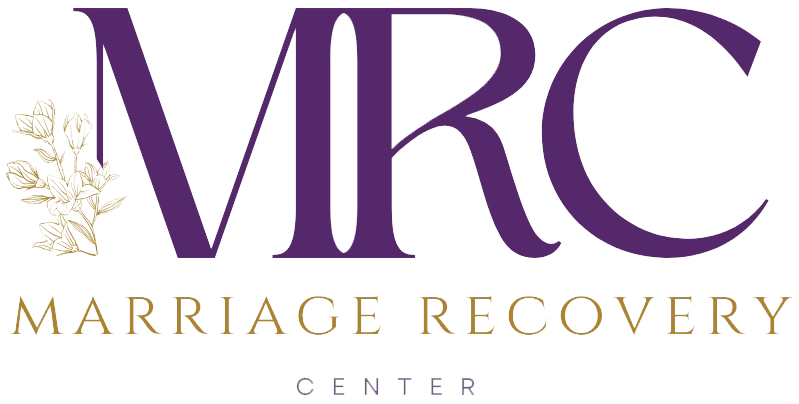Is your marriage on the rocks? Has your spouse said those dreaded words “I want out”? Dr. Hawkins talks about how to save your marriage in 5 steps when all hope seems lost.
How to Save Your Marriage in 5 Steps
Nobody likes to hear the words, “I don’t love you anymore,” “I want out of this relationship,” or “I’m going to get a divorce.” It’s petrifying and can shatter the foundation of a marriage. However, hope is not lost, and many relationships can be salvaged with the right approach. In this article, we will discuss five steps to save your marriage, even when it seems like the end is near. Dr. David Hawkins, the director of the Marriage Recovery Center, offers invaluable insights on how to navigate these challenging waters.
1. Do a Fearless Relationship Inventory
The first step in saving your marriage is to take a fearless relationship inventory. What exactly does this entail? A fearless relationship inventory involves taking a candid and thorough look at yourself and your behavior within the marriage. You must evaluate both the positive and negative aspects of your actions and interactions.
This process requires you to be brutally honest with yourself, acknowledging your strengths and weaknesses. It’s crucial to consider the feedback you’ve received from your spouse and the signals they’ve been trying to send. In many cases, we tend to be resistive and defensive when faced with this feedback, but it’s essential to be open and receptive.
The inventory should cover everything, from your communication style and emotional availability to your ability to meet your partner’s needs. By conducting this rigorous self-assessment, you gain a clearer understanding of your role in the relationship’s current state.
2. Recognize Your Partner’s Cry for Help
When your partner expresses their desire to end the marriage or voices their unhappiness, it’s a cry for help. They’re essentially saying, “I can’t take it anymore.” To save your marriage, you must delve deeper into what’s causing this distress and dissatisfaction.
Identify the unmet needs in your relationship that have led to this breaking point. Remember, the primary purpose of a relationship is to have needs met and to reciprocate by meeting your partner’s needs. So, pinpoint what these unfulfilled needs are and consider how you can start addressing them.
3. Make Corrective Emotional Experiences
Saving a marriage often involves making corrective emotional experiences, one step at a time. These experiences are the positive encounters, gestures, and actions that begin to reshape the emotional landscape of the relationship. Consistency is key here. It’s not about a one-time grand gesture but rather a series of small, meaningful interactions.
These experiences can be as simple as sharing a heartfelt compliment, showing affection, or actively listening to your partner. They are the building blocks of trust, intimacy, and connection. By incorporating positive experiences into your daily interactions, you can slowly shift the course of your marriage.
4. Seek Support
When trying to save your marriage, it’s crucial to seek support, but not just any support. Surround yourself with people who genuinely care about your well-being and the health of your relationship. These individuals should be willing to challenge you and help you face the situation head-on.
While it’s essential to have friends and family who offer emotional support, it’s equally important to have those who can provide constructive feedback. Look for individuals who will encourage you to examine the issues in your marriage honestly and critically. They should motivate you to seek professional help if necessary, understanding that there may be underlying problems that require expert guidance.
5. Engage in Therapeutic Support
The final step to save your marriage involves working with a therapist or counselor who can guide you through the process of change. A therapeutic relationship provides a structured and supportive environment where you and your partner can address the root causes of your issues and develop strategies to overcome them.
A skilled therapist will help you identify unhealthy patterns in your relationship, explore underlying emotions, and teach effective communication and conflict resolution skills. This therapeutic journey requires commitment and effort from both partners.
As you work through the therapeutic process, you’ll begin to notice gradual improvements in your marriage. The combination of self-awareness, corrective emotional experiences, and professional guidance can lead to positive change and healing.
It’s important to note that while these steps can significantly increase the chances of saving a marriage, it’s not a guaranteed formula. Some relationships may be beyond repair due to irreparable damage or persistent issues. However, in many cases, these steps can lead to a renewed and healthier partnership.
In conclusion, the process of saving a marriage is challenging, but it’s not impossible. By conducting a fearless relationship inventory, recognizing your partner’s cries for help, making corrective emotional experiences, seeking support from the right people, and engaging in therapeutic support, you can increase the likelihood of saving your marriage. Remember that love and commitment can overcome even the most significant obstacles when both partners are willing to put in the effort to rebuild their connection.
To learn how we can help, reach out to us at (206) 219-0145 or info@marriagerecoverycenter.com to speak with a Client Care Specialist
Also read: Why Forgiveness is so Important
About Dr. Hawkins:
The internet is inundated with hyperbole and misinformation about narcissism, leaving many people confused and hopeless. Get the facts on narcissism and emotional abuse from someone who has been researching, writing about and treating narcissism and emotional abuse for over a decade.
Dr. Hawkins is a best-selling author and clinical psychologist with over three decades of experience helping people break unhealthy patterns and build healthier relationships.
He is the founder and director of the Marriage Recovery Center and the Emotional Abuse Institute which offers education, training and counseling for people who want to break free of, and heal from, emotional abuse. Whether the perpetrator of the abuse is your spouse, partner, parent, boss, friend or family member, we offer practical advice for anyone trapped in a toxic, destructive relationship.
In addition to narcissism & emotional abuse, you’ll learn about the lesser known forms of abuse, including covert abuse, reactive abuse, spiritual abuse, secondary abuse, relationship trauma and much more.







